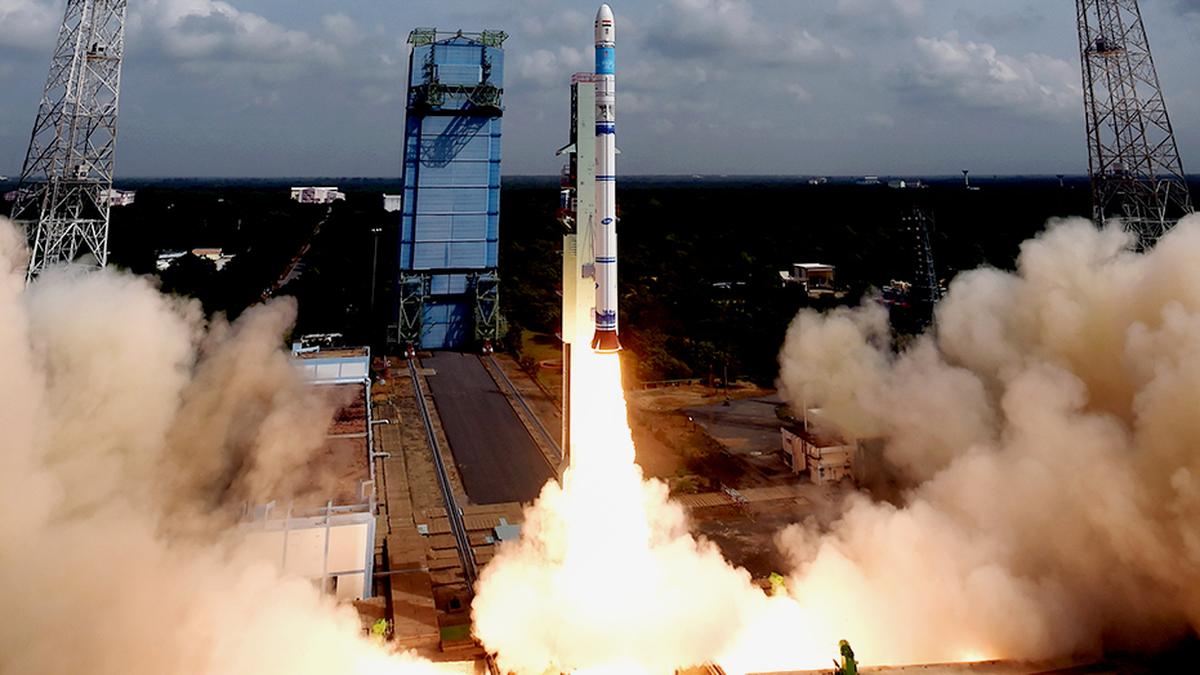- Courses
- GS Full Course 1 Year
- GS Full Course 2 Year
- GS Full Course 3 Year
- GS Full Course Till Selection
- Answer Alpha: Mains 2025 Mentorship
- MEP (Mains Enrichment Programme) Data, Facts
- Essay Target – 150+ Marks
- Online Program
- GS Recorded Course
- Polity
- Geography
- Economy
- Ancient, Medieval and Art & Culture AMAC
- Modern India, Post Independence & World History
- Environment
- Governance
- Science & Technology
- International Relations and Internal Security
- Disaster Management
- Ethics
- NCERT Current Affairs
- Indian Society and Social Issue
- NCERT- Science and Technology
- NCERT - Geography
- NCERT - Ancient History
- NCERT- World History
- NCERT Modern History
- CSAT
- 5 LAYERED ARJUNA Mentorship
- Public Administration Optional
- ABOUT US
- OUR TOPPERS
- TEST SERIES
- FREE STUDY MATERIAL
- VIDEOS
- CONTACT US
Atomic Clocks for One-Nation, One-Time
Atomic Clocks for One-Nation, One-Time
24-05-2024
India is deploying atomic clocks across the country to ensure the time shown on your digital watch, smartphone and laptop is truly based on Indian Standard Time.
- India will join an exclusive group of 4 other countries—the US, the UK, Japan, and Korea—to have their own atomic clocks
- An effort launched more than 2 decades ago after the Kargil war.
- Currently, most software operating modules in India rely on US-based Network Time Protocol servers.
- The government wants all software to instead be synchronised with indigenous atomic clocks, both for uniformity in time and as a defence mechanism, especially in times of war.
Key Points:
Deployment Goal:
- Synchronization of all digital devices with Indian Standard Time (IST) to ensure uniformity.
- Deployment by the National Physical Laboratory (NPL) under the Ministry of Science and Technology and the Ministry of Consumer Affairs.
What are Atomic Clocks?
- An atomic clock is the most accurate timekeeping device known to man. Unlike traditional clocks that use mechanical or quartz-crystal oscillations, atomic clocks measure time based on the natural vibrations of atoms.
- Invented in 1955 by Louise Essen.
- Currently operational in Ahmedabad and Faridabad in India.
Types of Atomic Clocks:
- Common types include cesium atomic beam, hydrogen maser, and rubidium gas cell.
- Cesium clock offers high accuracy and long-term stability.
- Hydrogen maser has the best stability for short periods.
How it works:
- Atomic Resonance: Atomic clocks use a specific type of atom, most commonly cesium-133. These atoms have a natural resonant frequency, which is the number of times they vibrate per second. This frequency is incredibly stable and consistent.
- Microwave Cavity: The cesium atoms are placed in a microwave cavity, where they are exposed to microwaves at a frequency close to their natural resonant frequency.
- Energy Level Transition: When the microwave frequency matches the cesium's resonant frequency, the atoms absorb the energy and transition to a higher energy level. This transition is detected and used to fine-tune the microwave frequency.
- Counting Oscillations: A feedback loop continuously adjusts the microwave frequency to keep it in sync with the cesium's resonant frequency. By counting the oscillations of the microwaves, the clock accurately measures time.
- Second Definition: The international standard unit of time, the second, is defined as 9,192,631,770 cycles of the radiation that gets cesium-133 atoms to vibrate between two specific energy levels.
Why are atomic clocks so accurate?
- Atomic Stability: The natural resonant frequency of atoms is incredibly stable and unaffected by external factors like temperature or pressure changes.
- High Frequency: The vibrations of atoms occur at extremely high frequencies (billions of cycles per second), allowing for very precise time measurements.
Applications of Atomic Clocks:
- Timekeeping: Atomic clocks are used to maintain the international standard for time and to synchronise clocks around the world.
- Navigation Systems: GPS and other satellite navigation systems rely on atomic clocks for accurate positioning.
- Scientific Research: Atomic clocks are used in various fields of research, such as physics, astronomy, and geology.
- Why is India Developing its Atomic Clocks?
- Background:
- Initiative sparked by the denial of Global Positioning System (GPS) information during the Kargil War.
- Independent timekeeping capabilities crucial for defense, cybersecurity, and online transactions.
- Need for Enhanced Security Measures:
- Efforts to connect atomic clocks via optical cables for enhanced security against potential disruptions.
- Reducing reliance on foreign atomic clocks, especially for critical infrastructure like the Indian Regional Navigation Satellite System (IRNSS) or NavIC.
- Background:
Significance:
Developing indigenous atomic clocks grants India complete control over its navigation systems, ensuring national security and technological independence.



